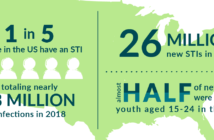The vaquita faces a very real threat of extinction. Down to roughly 30 individuals, this native of the Gulf of California has dropped 90 percent in number due to poaching, according to The New York Times.
The New York Times explains that the vaquita are accidently caught in gillnets which target another endangered species, the totoaba fish. The New York Times elaborates why the toboata fish is endangered as well:“The fish’s swim bladder is dried and smuggled to China, were wealthy diners pay thousands of dollars for the delicacy, believing it to have medicinal powers.”
The main reason for the vaquita’s decline is the use of the gillnets, which are still legal in Mexico, according to the New York Times, and without a ban, conservationists warn that there is no hope to save the vaquita.
Dr. Laura Altfeld, an associate professor of biology and ecology at Saint Leo University, said, “The situation that the vaquitas face is extremely dire, given that their main source of mortality persists, they exist nowhere else in the world, their population is so small, and we don’t know how to fully care for them or breed them in captivity.”
Altfeld also said, “I am, of course, very disappointed about the substantial decline in vaquitas. These animals are unique and, much to their detriment, extremely restricted in their range. The severity of their decline, however, is not unusual even if the very short time span for the decline is.”
She explained that many other species, including Floridian animals, such as Florida panthers, burrowing owls, and loggerhead sea turtles, experience a continual decline due to human activities and land development.
“Until or unless we commit to conservation practices (if not from the start, then once we realize the need for them), then we will continue to witness such extinction events,” said Altfeld.
However, as the situation becomes increasingly desperate, conservationists will attempt to capture vaquitas and breed them in captivity until they reach a more stable number of individuals.
Earlier this month, the Mexican government said it would give 3 million USD to the cause for VaquitaCPR, which stands for conservation, protection, and recovery, according to Nature.
Also, according to The New York Times, the project plans to use Navy-trained dolphins to find the vaquitas to capture.
Randall Wells, from the Chicago Zoological society in Illinois, told Nature, “No one has ever tried to catch the vaquita to keep them alive… There is so much of this that is being done for the first time. It’s all high risk.”
According to Yahoo! News, the vaquita does not do well in captivity. However, while this is not the perfect solution, it seems to be the only chance the porpoises have in this desperate situation.
When asked if past successful conservation efforts could be applied to the vaquita’s endangerment, Altfeld responded, “Activities that have worked for other species have included practices such as establishing refuges, or safe spaces where human activities are either prohibited or substantially reduced, modifying human activities to accommodate our and other species’ needs, education to make the plight of endangered species known to members of the public, and dedicating funding for ongoing research and monitoring programs which can track changes in target populations over time. All of these options have been theoretically available for vaquita conservation over the decades since the discovery of this animal. At this point, however, it may just be too late.”





